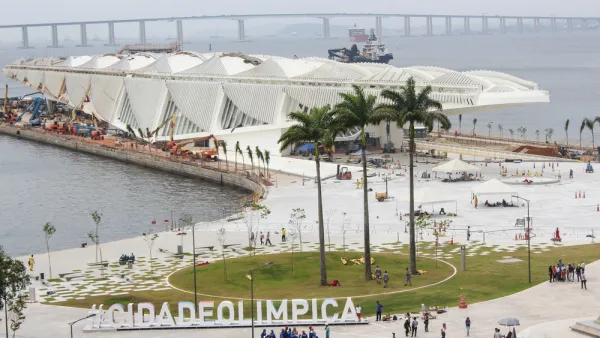For China, the Olympics represent a struggle between letting people in and controlling what they see and do. This is a problem, writes Andrew Yang, that implicates the Olympics-related architecture in a bad way.
"For China, the Olympics has been both a galvanizing force and an exercise in pride, partly deserved, partly not."
"Recently, however, the exercise has not gone entirely according to plan. In spite of their inevitability, the mass protests in Tibet, Xinjiang (the Muslim part of Western China), and Mongolia still caught the government off their usually rigid guard. Even more unpredictable has been the tumultuous time the government has had trying to control the coverage of these events. And when widespread public sympathy during the Sichuan Earthquake led to a huge demand for news, the state could no longer reasonably control the local and foreign media."
"The Olympics have laid bare the illogic behind the government's approach. It invites the world in, but then restricts entry for fear that a bunch of Teva-wearing hippies might show up and disrupt the games. Of course there will be controversy-China is a totalitarian state, after all-but in courting the public stage, China is also courting widespread scrutiny of its atrocious human rights record."
"Above all, what I blame most on the Olympics is how it implicates architecture in the fabrication of this whole spectacle, and even uses it to mask real urban problems confronting Beijing. Without a doubt, OMA's CCTV and Herzog and de Meuron's Olympic Stadium will remain masterpieces in the landscape of the city. But within its Soviet-inspired planning fabric, with its concentric highways lapping outward from the hub of the Forbidden City, huge monolithic-style building threatens to add to the isolation of Beijing's vast alienating stretches. Anyone who has traveled through rush hour there, where it routinely takes 60 minutes to budge five miles, will have contemplated the poor planning implicated by this level of congestion."
FULL STORY: Protest: China's Olympic Syndrome

Analysis: Cybertruck Fatality Rate Far Exceeds That of Ford Pinto
The Tesla Cybertruck was recalled seven times last year.

National Parks Layoffs Will Cause Communities to Lose Billions
Thousands of essential park workers were laid off this week, just before the busy spring break season.

Retro-silient?: America’s First “Eco-burb,” The Woodlands Turns 50
A master-planned community north of Houston offers lessons on green infrastructure and resilient design, but falls short of its founder’s lofty affordability and walkability goals.

Test News Post 1
This is a summary

Analysis: Cybertruck Fatality Rate Far Exceeds That of Ford Pinto
The Tesla Cybertruck was recalled seven times last year.

Test News Headline 46
Test for the image on the front page.
Urban Design for Planners 1: Software Tools
This six-course series explores essential urban design concepts using open source software and equips planners with the tools they need to participate fully in the urban design process.
Planning for Universal Design
Learn the tools for implementing Universal Design in planning regulations.
EMC Planning Group, Inc.
Planetizen
Planetizen
Mpact (formerly Rail~Volution)
Great Falls Development Authority, Inc.
HUDs Office of Policy Development and Research
NYU Wagner Graduate School of Public Service


























